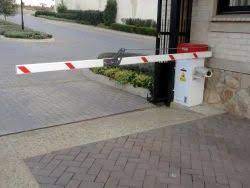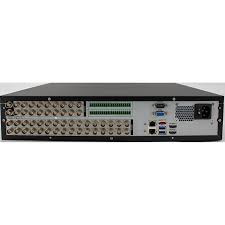Wired and Wireless: Understanding the Difference and Benefits
In today’s digital age, the terms “wired” and “wireless” are commonly used when referring to various technologies, including communication systems, networking, and security devices. Understanding the differences between wired and wireless technologies is crucial for making informed decisions about which option best suits your needs.
Wired technology refers to systems that use physical cables or wires to transmit data or signals. This traditional method of connectivity has been around for decades and is known for its reliability and stability. Wired connections are often preferred in situations where consistent and secure data transmission is essential, such as in office buildings, industrial settings, or areas with high interference.
On the other hand, wireless technology operates without the need for physical cables by using radio frequency signals to transmit data over the airwaves. Wireless systems offer greater flexibility and convenience as they eliminate the constraints imposed by cables. This makes them ideal for mobile devices, remote locations, and environments where running cables is impractical or costly.
Both wired and wireless technologies have their own set of advantages and limitations. Wired connections are generally faster and more secure than wireless connections since they are less susceptible to interference or signal loss. They also do not require batteries or charging, making them a reliable choice for critical applications.
Wireless technology, on the other hand, provides greater mobility and scalability compared to wired solutions. With wireless networks, users can connect from anywhere within range without being tethered to a specific location. This flexibility is particularly beneficial in dynamic environments or when rapid deployment is required.
When choosing between wired and wireless technologies, it’s essential to consider factors such as speed requirements, security concerns, cost considerations, and environmental constraints. In many cases, a combination of both wired and wireless solutions may offer the best of both worlds by leveraging the strengths of each technology where they are most effective.
Whether you opt for a reliable wired connection or embrace the freedom of wireless technology, understanding their differences can help you make informed decisions that align with your specific needs and objectives.
9 Essential Tips for Optimizing Wired and Wireless Network Performance
- Use high-quality Ethernet cables for faster and more reliable connections.
- Avoid bending or twisting Ethernet cables to prevent damage and signal interference.
- Use cable management solutions to keep wired connections organized and reduce clutter.
- Regularly check and replace damaged or frayed Ethernet cables to maintain optimal performance.
- Place your wireless router in a central location for better coverage throughout your home or office.
- Secure your wireless network with a strong password to prevent unauthorized access.
- Update your router’s firmware regularly to ensure security patches and improved performance.
- Limit the number of devices connected to your wireless network to avoid congestion and slow speeds.
- Consider using a dual-band or tri-band router for better performance in high-traffic areas.
Use high-quality Ethernet cables for faster and more reliable connections.
For faster and more reliable connections, it is recommended to use high-quality Ethernet cables. Investing in premium-grade Ethernet cables can significantly improve the speed and stability of your wired network connections. High-quality cables are designed to minimize signal interference and data loss, ensuring consistent and efficient data transmission between devices. By opting for superior Ethernet cables, you can enhance the performance of your network infrastructure and experience smoother connectivity for your various devices and applications.
Avoid bending or twisting Ethernet cables to prevent damage and signal interference.
To ensure optimal performance and longevity of your Ethernet cables, it is advisable to avoid bending or twisting them. Bending or twisting Ethernet cables can lead to physical damage and signal interference, which may result in connectivity issues and reduced data transmission speeds. By handling Ethernet cables with care and avoiding unnecessary strain on them, you can maintain a stable and reliable network connection for seamless communication and data transfer.
Use cable management solutions to keep wired connections organized and reduce clutter.
One effective tip for managing wired and wireless connections is to utilize cable management solutions to keep wired connections organized and reduce clutter. By implementing cable management techniques such as cable ties, clips, or sleeves, you can neatly arrange cables and prevent them from tangling or becoming a tripping hazard. This not only enhances the aesthetic appeal of your workspace but also makes it easier to identify and troubleshoot any connectivity issues that may arise. Additionally, organized cables can improve airflow and ventilation around electronic devices, helping to prevent overheating and prolonging their lifespan. Embracing cable management solutions is a simple yet impactful way to streamline your setup and maintain a tidy and efficient working environment.
Regularly check and replace damaged or frayed Ethernet cables to maintain optimal performance.
Regularly checking and replacing damaged or frayed Ethernet cables is essential to ensure optimal performance in your wired network setup. Damaged cables can lead to data loss, connectivity issues, and slower transmission speeds, affecting the overall efficiency of your network. By proactively monitoring the condition of your Ethernet cables and replacing any that show signs of wear and tear, you can maintain a reliable and stable connection for seamless data transfer and improved network performance.
Place your wireless router in a central location for better coverage throughout your home or office.
Placing your wireless router in a central location within your home or office is a smart tip to ensure better coverage and connectivity across all areas. By positioning the router centrally, you can minimize signal interference and maximize the reach of your wireless network, allowing devices in different rooms to receive a strong and stable connection. This strategic placement helps create a more balanced distribution of Wi-Fi signals, reducing dead zones and ensuring consistent internet access throughout the premises.
Secure your wireless network with a strong password to prevent unauthorized access.
Securing your wireless network with a strong password is essential to prevent unauthorized access and protect your sensitive data. A robust password acts as the first line of defense against potential intruders attempting to breach your network. By creating a complex and unique password consisting of a combination of letters, numbers, and special characters, you can significantly enhance the security of your wireless network and reduce the risk of unauthorized users gaining access to your personal information or compromising your system. Regularly updating your password and enabling additional security features such as encryption further fortifies your network’s defenses and ensures a safe and secure online experience for all connected devices.
Update your router’s firmware regularly to ensure security patches and improved performance.
To ensure the security and optimal performance of your network, it is important to regularly update your router’s firmware. By keeping your router’s firmware up-to-date, you can benefit from the latest security patches that help protect your network from potential vulnerabilities and cyber threats. Additionally, firmware updates often include enhancements that improve the overall performance and stability of your router, ensuring a seamless and reliable connection for all your wired and wireless devices.
Limit the number of devices connected to your wireless network to avoid congestion and slow speeds.
To optimize the performance of your wireless network, it is advisable to limit the number of devices connected simultaneously. By reducing the congestion on the network, you can prevent slowdowns and ensure faster speeds for all connected devices. This practice helps maintain a stable and efficient wireless connection, allowing each device to receive sufficient bandwidth for smooth and uninterrupted operation. By managing the number of devices accessing your network, you can enhance overall performance and user experience while minimizing potential disruptions due to overcrowding.
Consider using a dual-band or tri-band router for better performance in high-traffic areas.
When dealing with high-traffic areas where multiple devices are competing for bandwidth, it is advisable to consider using a dual-band or tri-band router for enhanced performance. These routers operate on multiple frequencies, allowing them to distribute traffic more efficiently and reduce interference in congested environments. By utilizing a dual-band or tri-band router, you can enjoy improved network stability and faster speeds, ensuring a seamless online experience for all connected devices even in busy settings.



